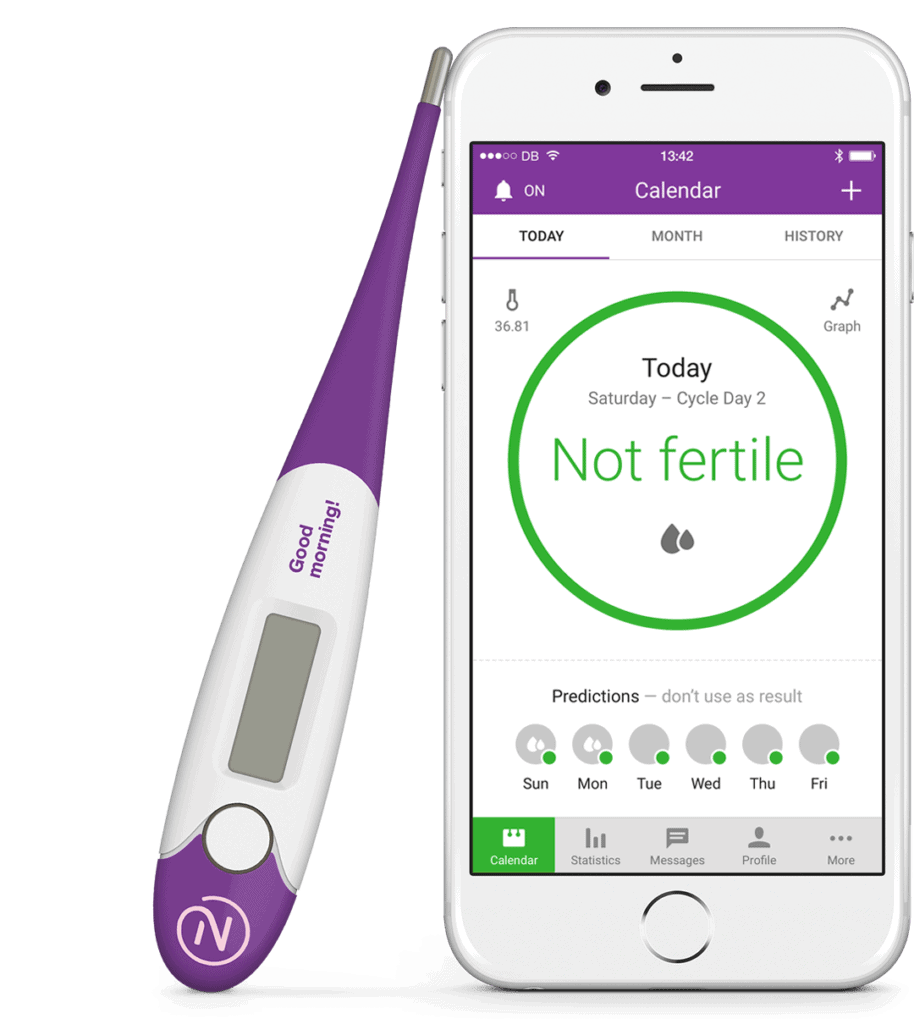Remember the birth control app developed by Elina Berglund, a former Large Hadron Collider physicist? Well, a Swedish hospital has lodged a complaint against her startup company, after the app reportedly caused 37 unwanted pregnancies.
The idea behind Natural Cycles was pretty straightforward, and it seemed effective. Woman fertility is driven by the menstrual cycle. When women ovulate, this brings forth a series of physiological changes, including a temperature change. The user would take measurements with a highly accurate thermometer and monitor bodily temperature. Then, using statistical methods, the app would estimate a woman’s fertility based on variations in her daily temperature. It would turn green when it’s OK to have sex, and red when sex was a no-no (when the woman is fertile).
It seemed to work good enough. In a clinical study which included 4,000 women, Natural Cycles scored an accuracy of 93 percent — not perfect, but comparable, to the condom and oral contraceptives. The birth control app received EU approval and right now, about 500,000 women are using it. But not everything went according to plan.
In a study carried out by the Södersjukhuset hospital in Sweden, out of 600 women who sought abortions in late 2017, 37 of them were using the Natural Cycles app. In other words, the app caused at least 37 unwanted pregnancies.
“We have a duty to report all side effects, such as pregnancies, to the Medical Products Agency,” midwife Carina Montin told Siren news agency.
The company went on the defensive, saying that this is only natural. No birth control method is perfect, they rightly argued, and as more and more women rely on Natural Cycles, more “accidents” are set to happen.
“An unwanted pregnancy is, of course, very unfortunate and we deeply care every time one of our users becomes pregnant unplanned,” the company said. “As our user base increases, so will the number of unplanned pregnancies coming from Natural Cycles users. This is an arithmetic truth applicable to all contraceptive methods.”
“To have 37 unwanted pregnancies out of the 668 mentioned in this study at Södersjukhuset means that 5,5 per cent of women who stated they used Natural Cycles also had an unwanted pregnancy. This is in line with what we communicate as the risk of unwanted pregnancy with typical use, and which is comparable to other types of contraception.”
But this is certainly a significant setback. At this point, it’s unclear if the 37 unwanted pregnancies fit with the 93% accuracy, but Natural Cycles will probably want to sort this out as soon as possible. The company is currently seeking approval from the FDA, and this might drastically jeopardize their chances.
Still, the problem of contraceptives remains pressing. Reliable contraceptive methods are few and far between, often coming with severe side effects. They also focus almost exclusively on women (except for the condom, of course). That might change next year, when a male contraceptive rub-on gel starts clinical trials.
UPDATE: A representative from Natural News has informed us that the Medical Products Agency (MPA) has closed all individual reports related to unplanned pregnancies concluding that there are no implications on behalf of Natural Cycles. In the meantime, Natural Cycles continues its own investigation.
“The Medical Products Agency has decided that all reports concerning Natural Cycles will be transitioned to trend reporting, in order to continuously monitor and report any unintentional pregnancies given the spread of the popular contraception app. Natural Cycles welcomes further data from the public to strengthen our clinical studies and aftermarket follow-up, why our open case at the Medical Products Agency is important to us.
Natural Cycles has continuous follow-up of its users and has performed clinical studies of the app. We continuously evaluate these data and communicate an efficiency of 93% in typical use. No reports from the public have so far provided any indication of being higher than our own data.
Moving forward, the MPA continues its investigation by transitioning to trend reporting, where Natural Cycles will share data with the MPA in order to ensure that the number of unintended pregnancies remain within expectations given the popularity and effectiveness of the app.”










